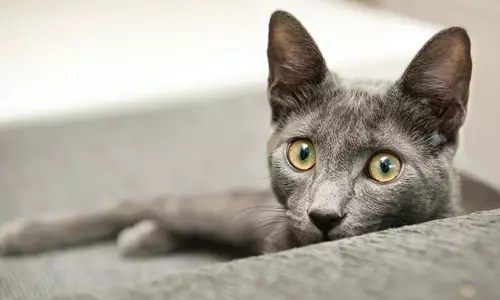When considering a cat as a family member, it’s crucial to recognize that each breed carries its own set of temperaments and behavioral tendencies. While some cats flourish in lively households, others thrive in serene settings. The myth that all cats are equally adaptable to children is just that—a myth. Genuine compatibility depends heavily on matching a cat’s inherent traits with your family’s lifestyle. For example, breeds like the Himalayan are known for their calm and affectionate nature but tend to favor peaceful environments; loud, boisterous children may inadvertently cause stress for such sensitive felines. Conversely, breeds like the Turkish Van, which are affectionate yet require personal space, may be misinterpreted by young children as aloofness, leading to miscommunication and potential frustration.
By critically assessing these breed qualities, prospective pet owners can make more informed decisions. It’s not enough to admire a breed’s looks or popularity; understanding their social needs, activity levels, and tolerance for handling is essential. For example, the Russian Blue is often perceived as a reserved but loyal companion, yet its shyness demands a delicate introduction process and a calm household to truly thrive. Recognizing these nuances prevents future disappointment and promotes a more harmonious relationship from the outset.
The Importance of Educating Children for a Safe and Loving Bond
A vital aspect often overlooked is the role children play in shaping a cat’s comfort level. Not all breeds are suitable for rapid or rough handling, a fact that stresses the importance of educating young family members about respectful interaction. Breed-specific tendencies can serve as a guide: Savannahs, for instance, are highly intelligent and energetic, but they prefer to approach affection on their own terms. This means children eager for constant cuddles may feel rejected or confused, leading to frustration for both parties.
On the other hand, breeds like the Singapura thrive in social settings but are sensitive to loud noises and chaotic environments. For families with older children who understand boundaries and animal care, this breed can be an excellent addition. Their social and affectionate nature, combined with environmental stability, can foster a strong, trusting bond. Therefore, selecting a breed is only part of the equation; equipping children with the knowledge and patience necessary for gentle interaction is equally vital in nurturing a positive relationship between family and pet.
Aligning Lifestyle and Expectations with Feline Temperament
Successful integration of a cat into a family hinges on the alignment between the pet’s needs and the household’s dynamics. Many assume that any affectionate breed can seamlessly fit into their busy lifestyle, but this isn’t realistic. For example, the Turkish Van’s independence means they often prefer to avoid prolonged cuddling—they demand respect for personal space. If children interpret this as rejection, misunderstandings can develop. Conversely, breeds like the Himalayan, which seek quiet companionship, may become distressed if subjected to constant noise and activity.
Flexibility and honesty about your household’s temperament and routines are crucial in choosing the right feline friend. A calm, patient environment will benefit sensitive breeds, while energetic breeds are better suited to active families. In the end, fostering a positive relationship depends on mutual understanding: the family must adapt to the cat’s personality, and the cat must feel safe and appreciated in its environment. Picking a breed that harmonizes with daily life not only ensures the happiness of the pet but also cultivates a nurturing and joyful family bond.

